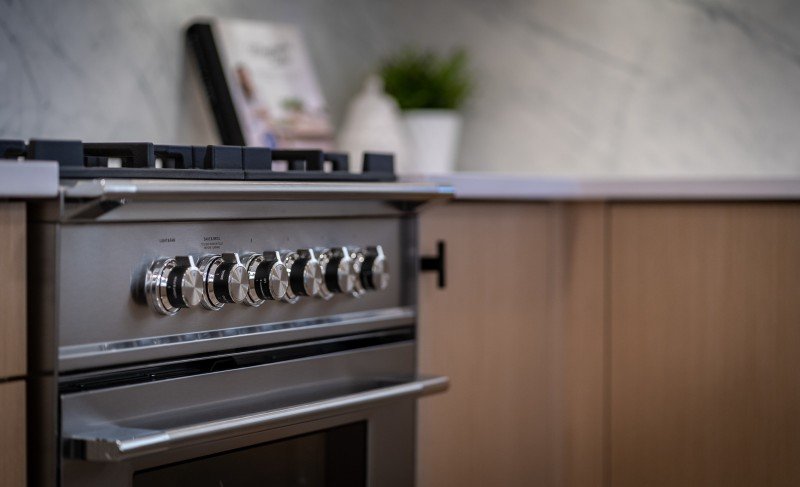
Understanding Hobs and Ovens: The Essential Kitchen Appliances
In the world of kitchen home appliances, couple of products are as vital as hobs and ovens. These devices form the backbone of cooking activities, allowing people to develop everything from simple meals to elaborate banquets. Comprehending the differences, types, and performances of hobs and ovens can substantially enhance one's cooking experience. This short article looks into the complexities of hobs and ovens, supplying insights that accommodate both amateur and skilled cooks.
What Is a Hob?
A hob, typically described as a cooktop or stove top, is the flat surface on which pots and pans are placed for cooking. Hobs are equipped with heating components that produce the needed heat for cooking food. They are available in numerous kinds, including gas, electric, induction, and ceramic options. Each type offers special benefits and disadvantages.
Types of Hobs
Gas Hobs:
- Heat Source: Natural gas or propane.
- Advantages: Instant heat control and responsiveness, preferred by lots of chefs for precise cooking.
- Disadvantages: Requires a gas connection and can be less energy-efficient.
Electric Hobs:
- Heat Source: Electric coils or smooth glass-ceramic surfaces.
- Advantages: Generally much easier to clean up, even heating, and widely available.
- Disadvantages: Slower to heat up and cool off compared to gas.
Induction Hobs:
- Heat Source: Electromagnetic currents.
- Advantages: Quick heating, energy-efficient, and only warms the cookware, not the surrounding surface.
- Downsides: Requires suitable cookware (ferrous materials).
Ceramic Hobs:
- Heat Source: Electric and has a smooth glass surface.
- Advantages: Sleek look, simple to clean, and even heating.
- Disadvantages: Can take longer to warm up and cool down.
What Is an Oven?
An oven is an enclosed appliance that cooks food by surrounding it with dry heat. Ovens can be standalone units or combined with hobs in a single device called a variety. Ovens are flexible tools that can be utilized for baking, roasting, broiling, and more.
Kinds of Ovens
Standard Ovens:
- Heat Source: Electric or gas.
- Advantages: Good for standard baking and roasting.
- Downsides: Can have unequal heat circulation.
Convection Ovens:
- Heat Source: Electric or gas with a fan for circulating air.
- Benefits: More even cooking and much faster cooking times due to air flow.
- Drawbacks: Can be costlier and may need modifications in cooking times.
Microwave Ovens:
- Heat Source: Microwaves.
- Benefits: Quick cooking and reheating; great for thawing.
- Downsides: Can not brown or crisp food well.
Steam Ovens:

- Heat Source: Steam generation.
- Advantages: Retains nutrients and wetness in food, much healthier cooking alternative.
- Disadvantages: Longer cooking times and usually higher expense.
Key Differences Between Hobs and Ovens
While hobs and ovens serve the primary function of cooking food, their performances and utilizes vary substantially. The following table summarizes these crucial distinctions:
| Feature | Hob | Oven |
|---|
| Cooking Method | Direct heat | Enclosed heat |
| Primary Use | Boiling, sautéing, frying | Baking, roasting |
| Heat Source | Gas, electric, induction | Gas, electric, steam |
| Cooking Area | Flat surface area | Enclosed space |
| Cooking Time | Generally much faster | Differs based on meal |
| Control & & Precision | Immediate and direct | Relies on settings and timers |
Benefits of Using Hobs and Ovens Together
Integrating making use of a hob and an oven can considerably enhance the cooking procedure. Here are some benefits:
- Versatility: Different types of food can be prepared simultaneously.
- Performance: Using both allows for various cooking methods, such as scorching on the hob and baking in the oven.
- Time-Saving: Multi-tasking can significantly lower general cooking time.
Upkeep and Care
To guarantee the longevity of hobs and ovens, regular upkeep is important. Here are some suggestions:
For Hobs:
- Clean spills instantly to avoid staining.
- Usage appropriate cleaners for particular materials (e.g., ceramic cleaner for glass-ceramic hobs).
- Regularly inspect gas connections for leakages (for gas hobs).
For Ovens:
- Wipe down the interior after each usage to avoid accumulation.
- Usage self-cleaning functions if readily available, or use oven cleaners for hard stains.
- Frequently examine seals and gaskets for wear and tear (to maintain heat efficiency).
Frequently asked questions About Hobs and Ovens
1. What is the very best type of hob for a beginner cook?
Answer: A ceramic or electric Best hob is frequently suggested for novices due to ease of use and cleansing.
2. Can I utilize any pots and pans on an induction hob?
Response: No, induction hobs require cookware made from magnetic products (e.g., cast iron or stainless-steel).
3. How often should I clean my oven?
Response: It is a good idea to clean your oven every few months, or more often if you use it frequently.
4. Is it much better to bake in a stove?
Response: Yes, stoves are typically better for baking as they supply even heat distribution. Nevertheless, some fragile recipes might gain from standard ovens.
Understanding the functionality and differences between hobs and ovens is essential for any cooking lover. Whether one chooses the instant heat of a gas hob or the precision of an induction cooktop, each type offers unique benefits. Likewise, ovens differ widely in function, from traditional baking to steam cooking. By valuing these devices' roles in food preparation, cooks can boost their culinary skills and improve their kitchen activities.